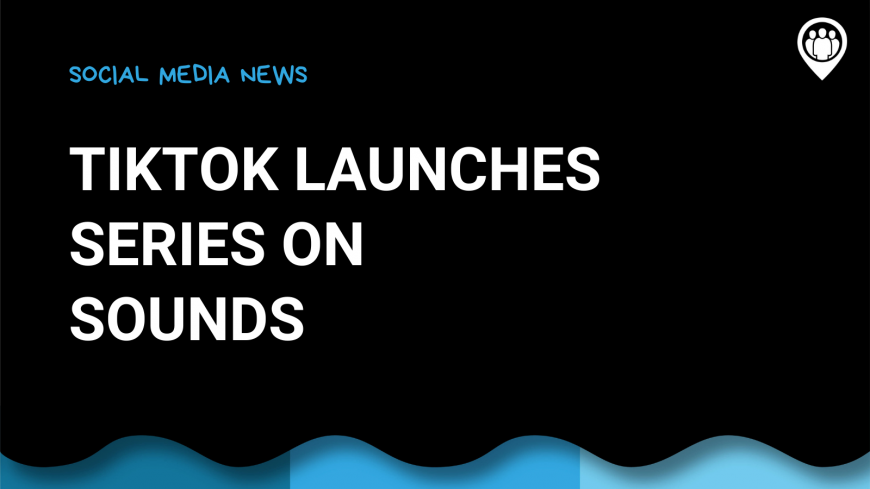TikTok offers insights into sound
Sahail Ashraf posted on 12 January 2022
TikTok uses sound, we know this. But brands don’t necessarily know how to capitalise on the impact of sound on audiences. Tiktok is now telling us how.

While TikTok may well be known as a platform built on audio due to its focus on music, brands don’t necessarily know how to use sound effectively. TikTok has recognised this, and released a new Insights series that addresses the effective use of audio directly.
Sound equals recognition
Before TikTok, the majority of popular platforms emphasized that sound wasn’t everything. Facebook and Instagram were places where brands could create video with the clear expectation that audiences would watch them with the sound off.
This had a positive effect, in that brands began to make videos that were shorter, more visual and engaging. However, TikTok makes it clear in the new Insight that sound plays a huge part in brand recognition.
What that means is that having sounds and/or music associated with the brand account over time will lead to audiences associating that brand with those sounds. TikTok says that 88% of it’s users feel that sound is ‘vital’ to the TikTok experience.
The platform goes further, and says that there is a 120% ‘uplift’ in brand recognition when brands use music and sound as part of their approach.
How can we use this information?
It’s no secret that music is the major element of TikTok. While brands can’t be expected to make award-winning songs that resonate with their audience, they can certainly get involved in other ways.
For example, if there is a song that is currently trending on TikTok and has huge recognition among members of your demographic, then it would be a good idea to link your brand to that piece of music in some way. Music on TikTok can be used by anyone, so finding a trending song and then creatively using it in your brand videos is both easy and natural when it comes to context. As the trend continues to grow you can continue to use the music. This creates that recognition over time.
As part of the process, TikTok suggests that brands ask themselves three questions:
- What are the sounds of your brand?
- Is your brand leveraging sound strategically?
- How can your brand leverage sound on TikTok?
These may not be questions that are easy to answer immediately. However, TikTok does go a step further with these challenges, and offers a few key pointers:
- Trends are how sound travels on TikTok. Some start as a simple voiceover, while others take shape in a snazzy recording studio. Check out the Discover page to see what is currently trending.
- Music sets up the mood and the rhythm. You can create entirely new sounds, amplify branded sounds, or license trending sounds. The possibilities are endless.
- Narration allows users to follow the happenings of a video or add in relevant voiceover. After filming your footage in the TikTok app, you can add narration by selecting the ‘Voiceover’ option from the top right menu.
- Add captions – a staple in TikTok content – so that your video can be understood even by those who aren’t able to hear it.
- Sounds parallel or amplify the actions in a video. When you post a video with original audio, users will be able to use that same audio for their own video creations.
Think about how sounds or accompanying actions in your videos could entice people to join in and post their own versions. A sound that goes viral can get your brand in front of a much broader audience.
The above provides a place for pretty much any brand to get started. For example, a brand could start to experiment with voiceovers, so that they establish sound as a key part of their approach. It’s possible that some brands aren’t even aware that they could add a voiceover effectively, as a marketing and branding tool.
Brands should be familiar with captions from other platforms. The key area here that may require a shift in thinking is that of thinking about how sounds could ‘entice people to join in’. That is an interesting concept. Whether brands want to create their own sounds in the hope they gain traction or jump on another trending sound or set of sounds, it is well worth exploring.
If you haven’t started to use sound on TikTok for your brand yet, dive into the Insight. It’s detailed enough to give you plenty to sink your teeth into, and accessible enough for brands who are completely new to the whole thing. But start, whatever you do, because TikTok isn’t going anywhere, and it’s really all about knowing how to use it before your competitors do.
If you’re a social media marketing manager then you need to get your hands on Locowise. It provides metrics and data that make your job easier. To find out more and schedule a demo, go here.



